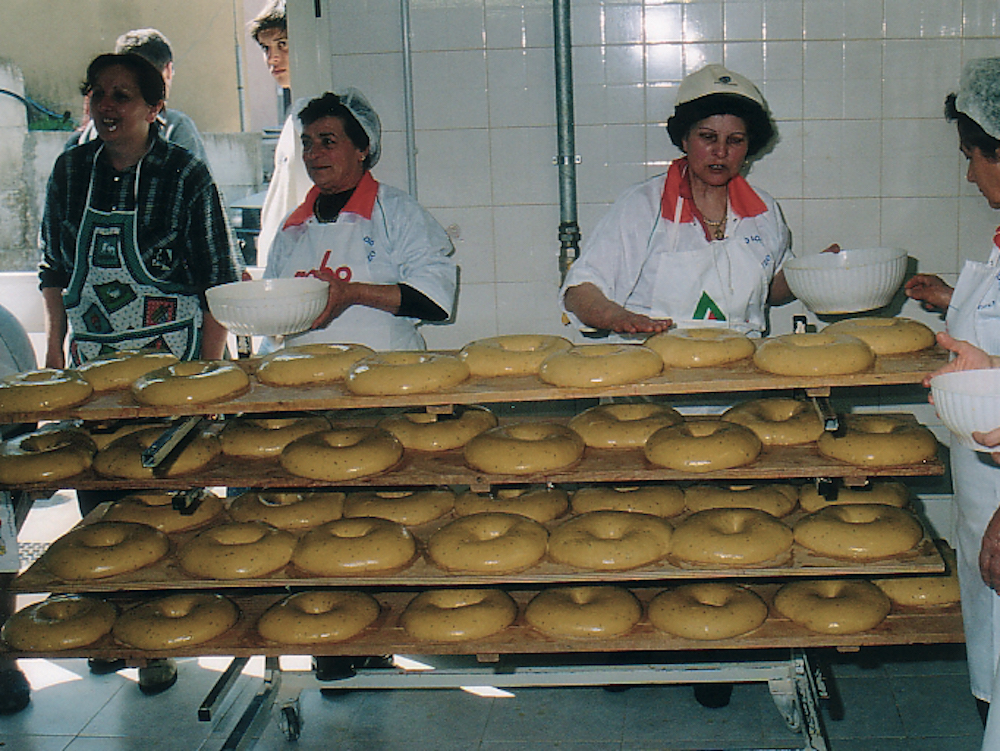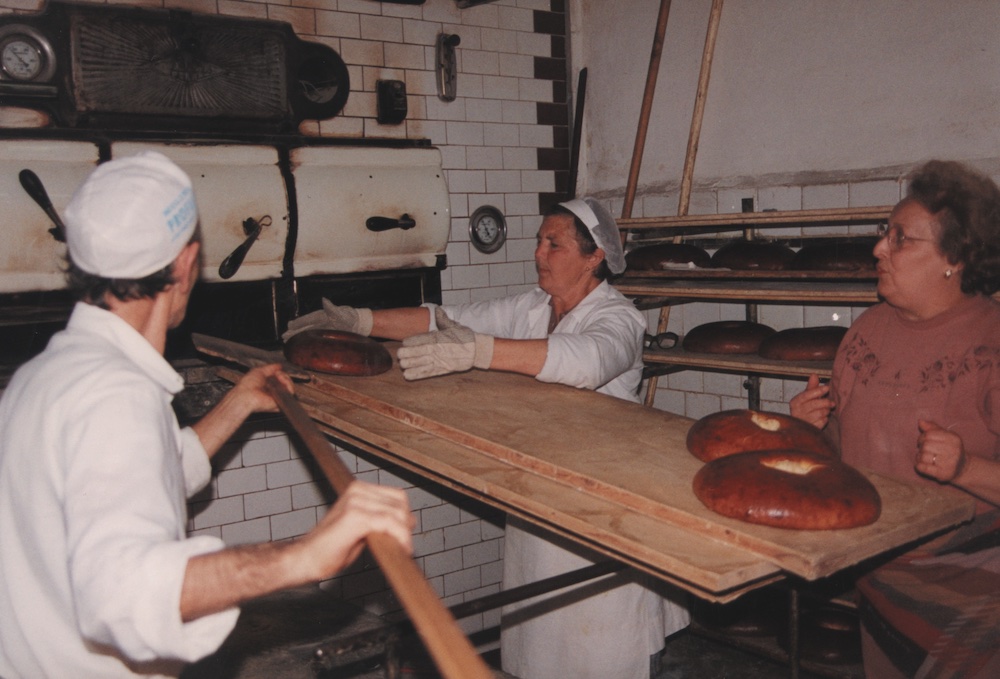in the signofVicino
St. Anselm’s Biscuit
The Biscuit of Bomarzo was formerly called the “Bread of St. Anselm.” It was sweet bread that Anselm, then Bishop of the city distributed to poor people and pilgrims on their way to Rome. The tradition is still perpetuated today and looks far ahead, alive as a sign of celebration in honor of the patron saint. The elaboration procedure is long and painstaking: on April 24 and 25 of each year, the housewives of Bomarza are busy with a thousand preparations, first and foremost the “search for the yeast,” which must be strictly natural, this being the secret to the success of the Biscotto. Then the “placing of yeast” is done in the ancient wooden cupboards with the propitiatory “sign of the cross” imprinted on them.
In the following hours, the actual preparation of the Biscotto takes place, which consists of manually mixing the yeast dough with the so-called “zozza” mixture of liqueurs, oil, wine, sugar, lemon, and aniseed heated in a bain-marie. The Biscuits, once doughnuts are placed at rest to rise over beds, well covered and in heated rooms. Thus begins the vigil of the women who consult each other while waiting for the cookie to “venghi bono” that is, ready for baking. Houses come alive with a sudden and boisterous bustle, in a ritual that signifies aggregation, celebration.
The cookies are then laid on wooden boards and taken to the oven where the “greasing” ritual awaits them, the housewives’ hands move as if to caress the product with beaten eggs, and they proceed for baking. The Biscuit of S.Anselmo remains the sign of a strong tradition that enumerates the true values contained in the history of a population, which has all the attributes to pursue the role of “typical product” over time.


The Palio of Saint Anselm
For some time now in Bomarzo visitors on April 23-24-25 have been continuously increasing because they are attracted by the “Palio” that is run among the five districts into which the town is divided. The districts are: Dentro, the oldest, Borgo, Poggio, Croci and Madonna del Piano. The Palio Race was recently restored but from ancient sources we know that this was run as early as the 1600s. Indeed, at that time there were two palii, one on April 24 and the other on April 25, days on which we celebrate Bomarzo’s patron saint, Bishop Anselm, who lived through the dark ages of the Gothic invasions and whose intervention repeatedly saved “his” people from barbarian danger.
